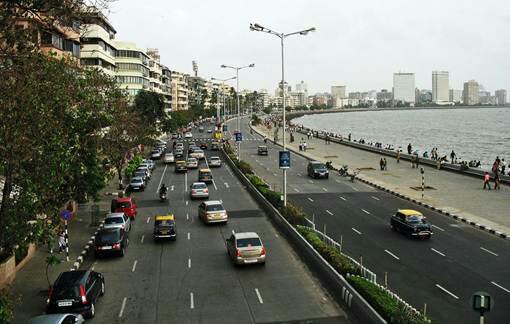
Who does not want to have a bungalow or flat facing sea. Globally, everyone wants to stay in room in a hotel that is facing sea-view. The mesmerising nature has its own depth like ocean which cannot be measured. But not many know that the coastal environment causes severe damage to the building structure and envelope (i.e., exterior doors, windows, skylights, exterior wall coverings, soffits, roof systems, and attic vents). When steel reinforcement corrodes, the corrosion product occupies more than three times the volume of the original steel, exerting great disruptive tensile stress on the surrounding concrete, leading to further cracking, more weather access and further corrosion. In mild cases, rust staining occurs whereas in more serious cases severe spalling of concrete may occur and ultimately the concrete members may fail completely.
The corrosive effect of salt-laden, wind-driven moisture in coastal areas cannot be overstated. Salt-laden, moist air can corrode exposed metal surfaces and penetrate any opening in the building. Corrosion is most likely to attack metal connectors that are used to attach the parts of the structure to one another, such as floor joists to beams and connectors used in cross-bracing below the finished lowest floor. Galvanized connectors coated with Zinc at the rate of 0.9 ounce per square foot of surface area (designated G-90) can corrode in coastal environments at a rate of 0.1 to 0.3 millimetre/year. At this rate, the Zinc protection will be gone in 7 years. Alternatively, a G-185 coated connector, which provides twice as much protection as G-90, can corrode in less than 20 years.
More galvanized protection (moreounces of Zinc per square foot of surface area to be protected) increases service life. Corrosion can also affect fasteners for siding and connectors for attaching exterior-mounted heating, ventilation, and air-conditioning units, electrical boxes, lighting fixtures, and any other item mounted on the exterior of the building.
Corrosion of reinforcing steel is one of the most important causes of deterioration of concrete structures in coastal environment. High permeability concrete, poor design detailing and construction defects such as inadequate depth of cover allow the ingress of salt and moisture into the concrete. High concentration of salt and moisture result in accelerated corrosion of reinforcing steel thereby significantly deteriorating the concrete structure.
Corrosion is commonly associated with deposition of sea salt in presence of moisture on steel and light metals. Chloride is the most significant corrosive species in the salt particles. Corrosion is influenced by the amount of salt on the metal surface and related to speed and direction of wind, distance of structure from the shore, elevation of the structures, degree of sheltering and frequency and amount of rain washing. Other factors that influence corrosion include time of wetness, relative humidity, metal surface temperature etc. Normal steel has poor resistance in coastal atmosphere and hence requires protection for durability.
So, moral of the story is… Do have a SEA facing bungalow or flat, SEE that the steel used is Galvanised…
Hindustan Zinc is India’s only and world’s leading Zinc-Lead-Silver Producer..

Article by- Pavan Kaushik, Head – Corporate Communication, Hindustan Zinc


